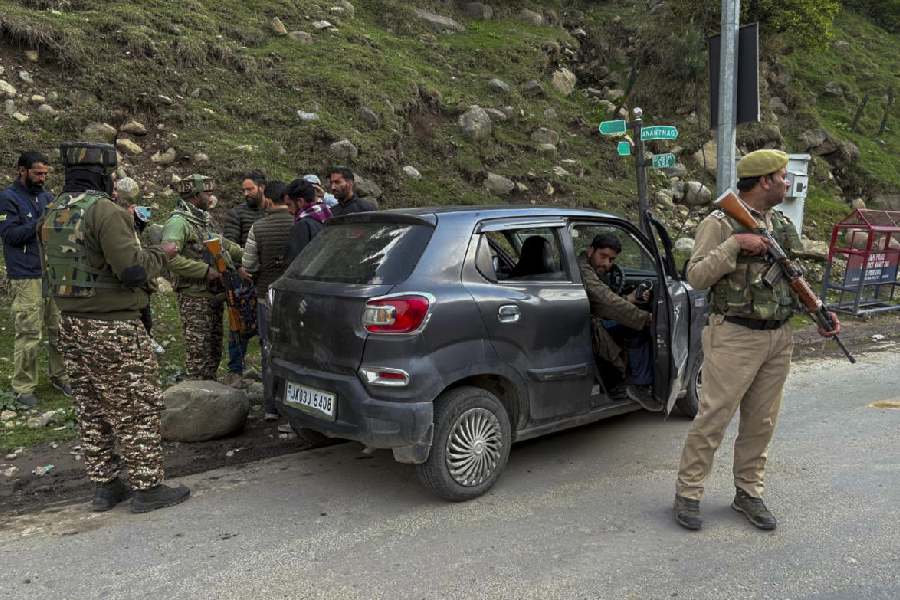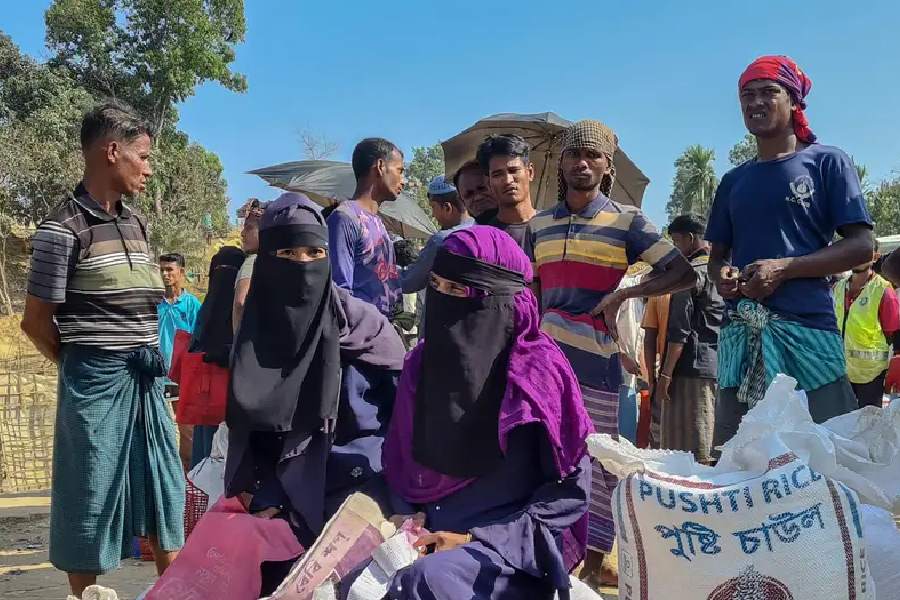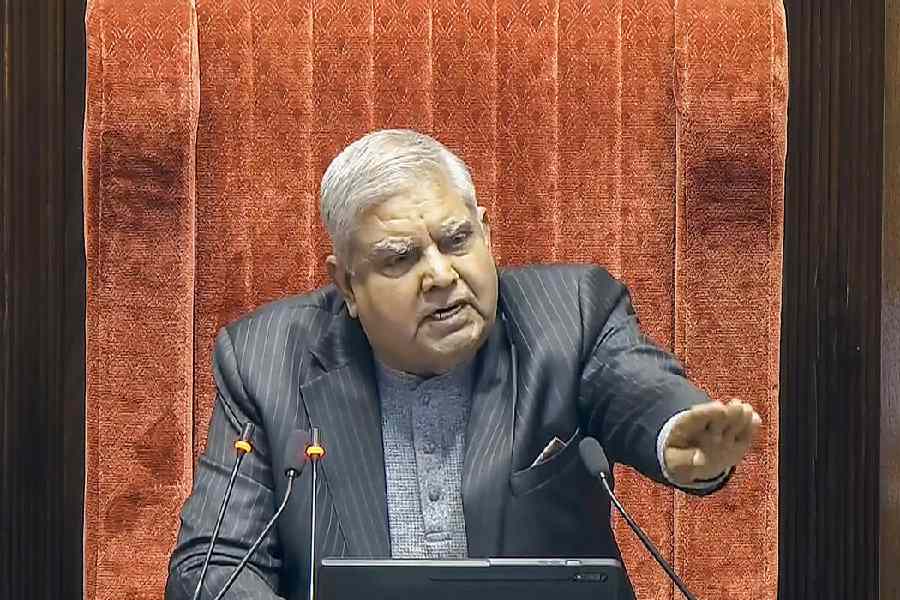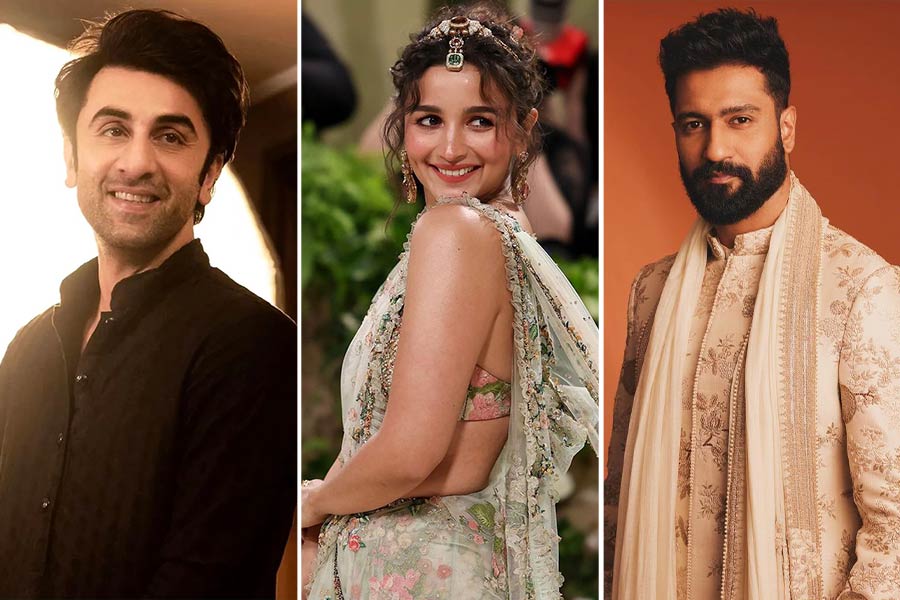
It kicks off in splashy style with a leggy supermodel strutting across the start-line carrying a board with a brief message in big, bold letters: 15 seconds.
Sure enough, about 15 seconds later the gates open and about 20 motorbikes come snarling out, revving furiously along a dirt track. They shoot into the air as they go over giant humps and kick up a trail of mud as they work their way around obstacles made from mud.
This is supercross, the rough rider sport that — along with its country cousin, motocross — is revving into high gear, with its mud-spattered, adrenaline-fuelled, two-wheel thrills. “Today, there’s a huge surge in the number of riders every year. And, that’s attracting many more who’ve come up to organise these events,” says Shyam Kothari, a five-time national motocross champion and founder president of Godspeed Racing, that organises national supercross championships.

Photo: Ketan Datar
Supercross and motocross are both in fast-growth mode but with around 20 supercross races happening in a year, it’s supercross that’s zooming ahead. Supercross takes place in a stadium that’s been converted into a rough racing track and motocross takes place in a more open area. “Both are highly skilled sports and involve tacking natural and man-made obstacles,” says Kothari.
Kothari isn’t the only one who’s taking to the rough dirt tracks and loving it. Eugene Niangti, a professional rider from Shillong, organises four motocross races annually and says more riders are turning up for events than ever before. He’s even got his nine-year-old daughter learning to ride and negotiate rough tracks. Says Niangti: “It costs me around Rs two lakh to organise one race but the satisfaction of seeing as many as 70 riders participate in these events compensates for everything.”
Suraj Kute from Nashik has taken his involvement in the two-wheel sport even further. He owns the Kute Supercross Track where he organises supercross events. But, besides that, he also trains aspiring riders.

Photo: Ketan Datar
One of Kute’s protégés is 17-year-old Shaina Kaur Virdi, the country’s only professional female supercross racer. Virdi is defiant about people who doubted her ability. “People used to say things like I am faking it and that I am not talented enough,” she says.
One sign that the two-wheel motorsport has arrived is that the corporate world is now sitting up and taking
notice. CEAT has just stepped in and become the key sponsor of the Pune Invitational Supercross League, a three-day event that takes place across Pune, Nashik and Kolhapur. “We are getting about Rs 2 crore annually from our sponsors to hold the event,” says Shivam Dave, CEO of Vilo Events.
Eeshan Lokhande, a former professional rider and director of Vilo Events, conceived the idea of holding a large-scale league event soon after returning from the UK in 2010. “I was taking part in a championship. That was when I decided to implement the idea and give shape to my dream of putting India on the map of world racing,” he says. “The sport’s growing really big now. Earlier, the prize money used to be a paltry sum but that’s changing now.”

The league has seven teams with 52 riders including seven junior riders (aged between four and 18 years), seven international riders and 38 Indians who are picked through auction. Says Dave: “Earlier, we had six riders per team which has now been changed to nine riders per team. So, the format now allows two international riders and seven Indian riders, including one junior. So there will be more slots for the Indians.” The League will start next month.
Others, too, have corporate backing as they take to the mud tracks. Aravind KP, one of India’s top riders made his name as a racer to be reckoned with after he won the Sri Lanka Association of Racing Drivers and Riders (SLARDAR) Championship in 2011 and the Gulf Dirt Track National Championship at Mangalore. Soon after that win TVS put him on the company payroll and also started paying all his racing expenses. The young racer is now looking at conquering new dirt tracks. Says Aravind: “I participate in about 30 races a year. But I now plan to race in US events.”
For Jaipur-based Gourav Khatri, a benefactor has turned up in the form of oil major Hindustan Petroleum which helps him to stay on the road. A second backer is a company named French Factor, which makes deodorant.

Photo: Ketan Datar
Khatri’s unusual in that he specialises in what’s called freestyle motocross in which riders attempt jumps and daredevil stunts in the air. “I perform dangerous stunts in the air while my bike is airborne. The joy that I get out of these stunts is inexplicable.” Khatri’s already organising small, local motocross events but he’s also planning a much larger one.
Each of these riders is looking for ways to expand the sport. Lokhande is organising his two-wheel version of cricket’s Indian Premier League. And Kothari recently called in a foreign coach and organised a month-long, free-of-charge camp for all comers.
Supercross may not involve getting up to high speeds but it’s every bit as dangerous as high-speed, two-wheeler races. “It wears you out and poses the most life-threatening injuries you can ever imagine,” says Virdi who recalls one accident when she took a hit to her head. “I had temporary memory loss for some time. It was pretty scary,” says the Mumbai-based racer.
Aravind tells similar jarring tales. “I once broke my collar bone, fingers, an arm and had a hip fracture too but
I guess that wasn’t enough to stop me from following my passion,” he says. As a teenager, all Aravind wanted was to become a motorbike racer. “I was gifted a Pulsar bike by my mother on my 17th birthday and that’s how I started to race,” says the Mangalore-based racer.

Photo: Ketan Datar
Make no mistake, both supercross and motocross are arduous sports and you’ve got to keep at it for several hours a day. Aravind, for example, trains for at least three hours in the gym, followed by cycling for 40km every day. “During races our heart rate goes to 190, so it is imperative to do these exercises,” says Aravind.
Similarly, Virdi cycles for two hours every evening. “I study in the morning and attend my tuitions, but since I am in the 12th standard, time comes at a premium and so I cycle at night,” says the racer.
The sport recently got another shot in the arm when the Federation of Motor Sports Clubs of India (FMSCI), officially recognised Under-15 (years) as a competitive category and called it as SX Junior.

This change in the rules is bringing youngsters into the sport at an earlier age than ever before. So, you have prodigies like 10-year-old Yuvrajsinh Konde Deshmukh, who already has 14 motocross trophies under his belt — at the Ajmera I-land Motocross Championship in Mumbai he won in all three categories (Under-10, Foreign Class Bikes and Under-14). The pre-teen also revved up his performance and had wins at a race organised by the American Motorcyclist Association’s in Virginia and the DMX championship in Dubai last year.
“He has a unique talent for skills like jumping and body balance, which require a lot of effort, that too at such a tender age,” says Rustom Patel, his trainer and the head coach at the I-Land Racing Academy in Mumbai.
Or look at nine-year-old Karan Karle from Pune. The son of a bike mechanic, Karle came second in the Mumbai Motocross in 2014. He is also one of the top three contestants in the SX Junior championship.
“Once he hurt his collar bone in an event and when we took him to the doctor his first question to him was when could he get back to racing,” says Lokhande, who trains Karle.

Photo: Ketan Datar
Then there’s 14-year-old Rugved Barguje, who achieved the feat of being the only Indian teenager to have won the 2014 SLARDAR championship in Sri Lanka and is now also sponsored by TVS. “I love what I do. In fact the more I get injured, the more I want to ride,” says the son of a former national motocross champion.
Mind you, these kids just exactly know how to strike the fine balance between academics and pursuing their passion by practising only over weekends.
They also follow an incredibly rigorous and disciplined exercise regimen. Barguje starts his day at 5a.m. “I jog 10km in the morning,” he says. “After school I go for swimming for an hour and then cycle for two hours.”
Similarly, Karle runs every day for 4km and swims once a week. “He does basic exercises three days a week,” says Lokhande.
Mind you, it costs a huge amount to keep going over the giant bumps on the supercross and motocross tracks. “It’s exorbitantly expensive and people find it hard to survive without sponsorship,” says Kute.
“An imported supercross or a motocross bike from international brands like Kawasaki, KTM and Yamaha can cost anywhere between Rs 7 lakh and Rs 8 lakh, and since motorsports in India is not recognised by the government, you end up paying 100 per cent duty on it,” says Kothari. “Then the equipment like jerseys, chest guards, boots, etc., set you back by around Rs 1 lakh,” he adds.
One man who is riding to the rescue is Jatin Jain, a former rider from Nagpur who is distributing equipment like helmets, guards and tyres at the lowest rates possible. “Had Jatin not been there, the cost of the equipment would have kept many aspirants away from the sport,” says Khatri.
Jain has been importing quality equipment from abroad for several years now. He says: “The sale of equipment has been increasing at least 15 per cent a month which is a sure-shot sign of the sport’s growing popularity.”
Kothari’s now thinking even bigger and planning a supercross championship. “This will be with the approval of FIM (the world motorcycle sports governing body) and UEM (Asian Federation),” says the veteran. He adds: “It will be a worldwide championship with foreign riders that will surely make everyone sit up and take notice of us.”











